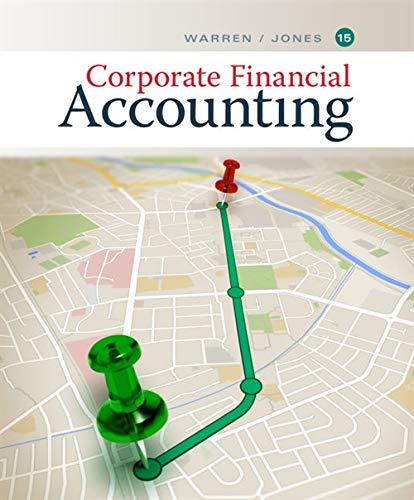Question
FIFO Perpetual Inventory The beginning inventory at Dunne Co. and data on purchases and sales for a three-month period ending June 30 are as
FIFO Perpetual Inventory The beginning inventory at Dunne Co. and data on purchases and sales for a three-month period ending June 30 are as follows: Number Date Transaction Apr. 3 Inventory 8 Purchase of Units Per Unit Total 90 $300 $27,000 180 360 64,800 11 Sale 120 1,000 120,000 30 Sale 75 1,000 75,000 May 8 Purchase 150 400 60,000 10 Sale 90 1,000 90,000 19 Sale 45 1,000 45,000 28 Purchase 150 440 66,000 June 5 Sale 90 1,050 94,500 16 Sale 120 1,050 126,000 21 Purchase 270 480 28 Sale 135 1,050 129,600 141,750 Required: 1. Record the inventory, purchases, and cost of merchandise sold data in a perpetual inventory record similar to the one illustrated in Exhibit 3, using the first-in, first-out method. Under FIFO, if units are in inventory at two different costs, enter the units with the LOWER unit cost first in the Cost of Goods Sold Unit Cost column and in the Inventory Unit Cost column. Dunne co Dunne Co. Schedule of Cost of Goods Sold FIFO Method For the Three Months Ended June 30 Purchases Purchases Purchases Cost of Goods Sold Date Quantity Unit Cost Total Cost Quantity Cost of Goods Sold Unit Cost Cost of Goods Sold Total Cost Inventory Inventory Inventory Quantity Unit Cost Total Cost Apr. 3 90 300 27,000 Apr. 8 180 360 64,800 90 300 27,000 180 360 64,800 Apr. 11 90 300 27,000 150 360 54,000 30 360 10,800 Apr. 30 75 360 27,000 75 360 27,000 May 8 150 400 60,000 75 360 27,000 150 400 60,000 May 10 75 360 27,000 135 400 54,000 15 400 6,000 May 19 May 28 45 400 18,000 90 400 36,000 150 440 66,000 90 400 36,000 150 440 66,000 150 440 66,000 June 5 June 16 90 400 36,000 150 440 66,000 120 440 52,800 30 440 13,200 June 21 270 480 129,600 30 440 13,200 270 480 129,600 June 28 30 440 13,200 60 x 480 480 June 30 Balances 2. Determine the total sales and the total cost of goods sold for the period. Journalize summary entries for the sales and corresponding cost of goods sold for the period. Assume that all sales were on account. If an amount box does not require an entry, leave it blank. Description Record sale Accounts Receivable Sales Record cost Cost of Goods Sold Inventory 3. Determine the gross profit from sales for the period. 4. Determine the ending inventory cost as of June 30. Debit Credit June 30 Balances 2. Determine the total sales and the total cost of goods sold for the period. Journalize summary entries for the sales and corresponding cost of goods sold for the period. Assume that all sales were on account. If an amount box does not require an entry, leave it blank. Description Record sale Accounts Receivable Sales Record cost Cost of Goods Sold Inventory 3. Determine the gross profit from sales for the period. 4. Determine the ending inventory cost as of June 30. Debit Credit 5. Based upon the preceding data, would you expect the ending inventory using the last-in, first-out method to be higher or lower? Lower Feedback
Step by Step Solution
There are 3 Steps involved in it
Step: 1

Get Instant Access to Expert-Tailored Solutions
See step-by-step solutions with expert insights and AI powered tools for academic success
Step: 2

Step: 3

Ace Your Homework with AI
Get the answers you need in no time with our AI-driven, step-by-step assistance
Get Started






